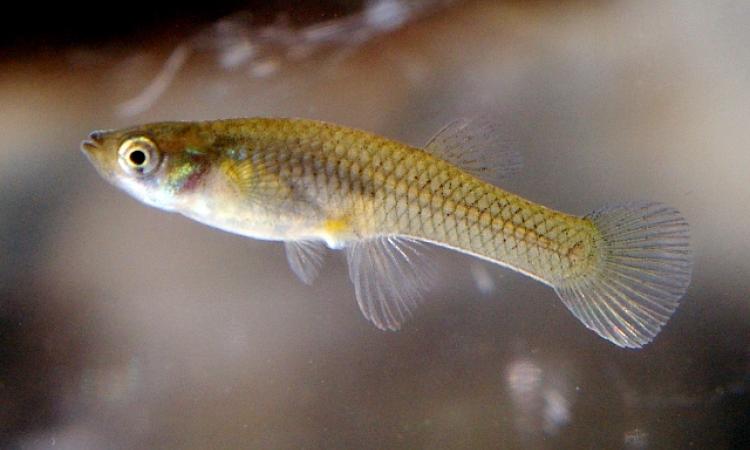
Threats to freshwater bodies in India are many and include pollution, flow modification, overexploitation and habitat degradation. Besides these, introduction of invasive alien species is a growing problem in India threatening freshwater biodiversity leading to a decline in native species and compromising the health of freshwater bodies.
What is an invasive species
An invasive species can spread beyond the habitat than where it is normally found, is highly resilient and can reproduce in large numbers and maintain its population over several generations. It can also aggressively compete and replace local species causing negative impacts on the biodiversity in local freshwater habitats.
This paper 'The enemy of my enemy is still my enemy: the biological invasion and management of Gambusia in Peninsular India' published in the journal Current Science informs that there are a number of examples world over that have shown that introduction of invasive species in the environment for biocontrol can pose a threat to the native biodiversity and can cause serious negative impacts on freshwater ecosystems, also affecting livelihoods of people who depend on the water bodies.
Western mosquito fish - Gambusia affinis and the eastern mosquito fish - Gambusia holbrooki are freshwater fish that were recommended for biocontrol of mosquitoes globally in malaria control programmes. Their increasing introduction in freshwater ecosystems around the world led to the widespread distribution/spread of these species outside their normal habitats.
Gambusia, fish with a questionable impact
Gambusia are small fish around 4–7 cms in length that feed on a variety of organisms found in the freshwater such as zooplankton (small organisms that float and drift in the water), copepods (small aquatic crustaceans), water fleas, surface insects, larvae, beetles, small organisms found at the bottom of freshwater bodies, molluscs, algae, frog tadpoles, fish eggs etc.
The fish are exceedingly resilient and are good at adapting to new environments and climatic conditions, attain early maturity under suitable conditions and have a long reproductive season. A female can retain eggs in her body and lay eggs under suitable conditions with a high survival rate. This adaptability makes them well suited for freshwater ecosystems around the world.
While Gambusia are known to be present in Indian waters, it is still unclear when they were first introduced to India and which of the two species were introduced in the country. A number of governmental research institutions such as The Indian Council of Medical Research (ICMR), New Delhi, National Institute of Malaria Research (NIMR), New Delhi as well as municipal corporations, district administrations, fisheries departments, health departments, tribal development agencies, private institutions, local aquaculturists and the public have played a major role in introducing mosquito fish in freshwater bodies in India.
Use of larvivorous fish has especially been encouraged under the Enhanced Malaria Control Project (EMCP) and the Malaria Action Plan in different states in India including the Nicobar Islands, known to be rich in biodiversity. However, studies on the effectiveness of Gambusia in mosquito control continue to be inconclusive.
Infact, studies show that G. holbrooki mostly feed on zooplankton, insects and organisms found at the bottom of rivers, lakes and less on mosquito larvae which leads to mass reduction in zooplankton triggering algal blooms thus reducing the water quality. G. affinis too feeds on a variety of organisms found in freshwater and not only on mosquito larva in order to survive.
Gambusia – invaders of biodiversity
More and more evidence shows that Gambusia are extremely harmful to native biodiversity and can lead to reduction in a range of small microscopic aquatic organisms found in freshwater habitats. For example, studies show that introduction of G. holbrooki in water bodies can lead to competition, predation and aggressive interactions with native species threatening their survival and affecting the ecological balance of freshwater bodies.
Very few studies exist in India that have shed light on the negative impact of Gambusia on native species and freshwater ecosystems. However, those that are available indicate that increase in Gambusia population correlates with a decline in other fish. Gambusia also display aggressive behaviour like chasing other fish and fin nipping, thus injuring native fish that can suffer from bacterial infections and eventually die. Additionally, Gambusia feed on zooplankton and aquatic insects, which may increase the marine algae population thus disturbing the ecological balance of the freshwater body.
Gambusia have now been recognised as one of the worst invasive species by the IUCN . G. holbrooki is listed under the Invasive Alien Species Act of Japan. G. affinis is regulated as a major invasive alien species in China. Gambusia are listed under the Biosecurity Act of 2014 in Australia.
In India, G. affinis and G. holbrooki have been listed as invasive species by the National Biodiversity Authority. The World Health Organization, Geneva, has stopped recommending Gambusia as a mosquito control agent.
Unfortunately, lack of coordination between various Government and non governmental institutions has resulted in Gambusia still being widely introduced into water bodies for mosquito control in India. Stricter policies and enforcement are required to avoid introducing Gambusia to freshwater ecosystems and prevent harm to our fragile aquatic ecosystems.
Strict control on introduction of Gambusia in freshwater needed
Management of invasive Gambusia should involve the following steps:
• Identification of species
• Understanding the history of invasion of Gambusia
• Risk assessment
• Monitoring
• Policy level changes
India needs to take a strong stand against further introductions and limit the spread of Gambusia in the country in order to preserve the aquatic biodiversity and native species health in the country, warns the paper.
The paper can be accessed here